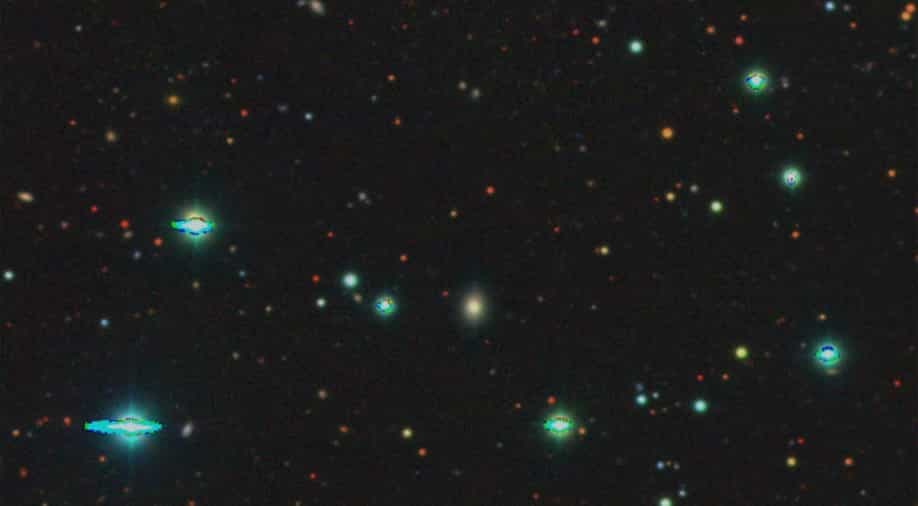Description

Disclaimer: Copyright infringement not intended.
Context
- For the first time, an AI system discovers supernova without human intervention.
Details
Overview of BTSbot and its Significance
- Automated Supernova Discovery: BTSbot is an advanced machine-learning algorithm developed by an international team of scientists, led by Northwestern University. It has successfully automated the entire process of discovering a supernova, from initial detection to confirmation and classification.
- Data Training and Processing: The AI system has been trained using an extensive dataset of over 1.4 million images from nearly 16,000 sources, enabling it to efficiently identify and classify supernovae across the night sky.
- Reduction of Human Error and Time: By removing humans from the detection process, BTSbot minimizes the possibility of human error and significantly accelerates the speed of supernova discovery and analysis.
Functioning and Workflow of BTSbot
- Integration with Robotic Telescopes: BTSbot collaborates with robotic telescopes such as the Zwicky Transient Facility (ZTF) in California, which regularly scans the northern sky for astronomical events.
- Spectrum Analysis and Confirmation: Upon detecting a potential supernova, BTSbot automatically requests the supernova's spectrum from another robotic telescope, the Spectral Energy Distribution Machine (SEDM) at Palomar Observatory.
- Automated Classification: The obtained spectrum is then processed by SNIascore, a tool developed by Caltech's Christoffer Fremling, to determine the type of the supernova, thus further automating the classification process.

Implications and Future Prospects
- Enhanced Efficiency and Productivity: Incorporating BTSbot into the workflow of supernova detection reduces the need for manual inspection and accelerates large-scale studies of these cosmic events, allowing researchers to focus more on data analysis and hypothesis development.
- Advancements in Understanding Stellar Evolution: The automated discovery and analysis of supernovae can contribute to a deeper understanding of the life cycles of stars and the elemental processes involved in supernova explosions.
- Rapid Progress in Astrophysical Research: By leveraging the capabilities of AI, astronomers can now potentially accelerate the pace of research and exploration in the field of astrophysics, leading to new insights into the origins and dynamics of the universe.
About Supernova
What is a Supernova?
- A supernova is a stellar explosion that occurs when a star reaches the end of its life cycle.
- There are several types of supernovae, but they all share the common characteristic of releasing an enormous burst of energy, often outshining entire galaxies for a brief period.
Types of Supernovae
- Type Ia Supernovae: These occur in binary star systems where one of the stars is a white dwarf. As the white dwarf accretes matter from its companion, it eventually reaches a critical mass, triggering a runaway nuclear fusion that causes the entire star to explode.
- Type II Supernovae: These are the result of the rapid collapse and violent explosion of a massive star. The core of the star collapses under its own gravity, leading to a rebound effect that results in a powerful explosion.
Stages of a Supernova
- Precursor Stage: The precursor to a supernova may involve a massive star consuming its nuclear fuel and eventually reaching a point where it can no longer support itself against its own gravitational force.
- Core Collapse: The core of the star collapses due to the depletion of nuclear fuel. This collapse can generate an intense shockwave that travels through the outer layers of the star.
- Supernova Explosion: The shockwave generated during the core collapse causes the outer layers of the star to be ejected into space at tremendous speeds. This explosive release of energy results in the visible phenomenon of a supernova.
- Remnant Formation: After the explosion, the remaining material can form either a neutron star or a black hole, depending on the mass of the progenitor star.
Importance of Supernovae
- Element Formation: Supernovae play a crucial role in the creation of elements heavier than iron, as the intense heat and pressure during the explosion facilitate nucleosynthesis.
- Cosmic Evolution: The energy and elements released during supernovae enrich the interstellar medium, influencing the formation of subsequent generations of stars and planetary systems.
- Cosmic Distance Indicators: Type Ia supernovae, due to their uniform brightness, are essential in measuring cosmic distances and have contributed significantly to our understanding of the expansion of the universe.
Observational Significance
- Light Curves: Supernovae display distinct light curves that allow astronomers to classify and study them in detail.
- Spectral Analysis: By analyzing the spectra of supernovae, scientists can gain insights into the chemical composition and physical processes occurring during the explosion.
Notable Supernovae
- SN 1987A: This supernova, which occurred in the Large Magellanic Cloud, was the closest observed supernova since the invention of the telescope.
- SN 1993J: This supernova, observed in the galaxy M81, provided valuable insights into the dynamics and mechanisms of Type II supernovae.

Conclusion
The successful application of BTSbot highlights the increasing role of AI in transforming the landscape of astronomical research and discovery, paving the way for more efficient and accurate exploration of the cosmos. Studying supernovae is crucial for understanding the life cycle of stars, the formation of elements, and the evolution of the universe. Continued research into these cosmic explosions has the potential to reveal more about the fundamental nature of our universe.
|
PRACTICE QUESTION
Q. Analyze the challenges and opportunities presented by the integration of AI in the domain of space exploration and celestial event detection. (250 Words)
|
















